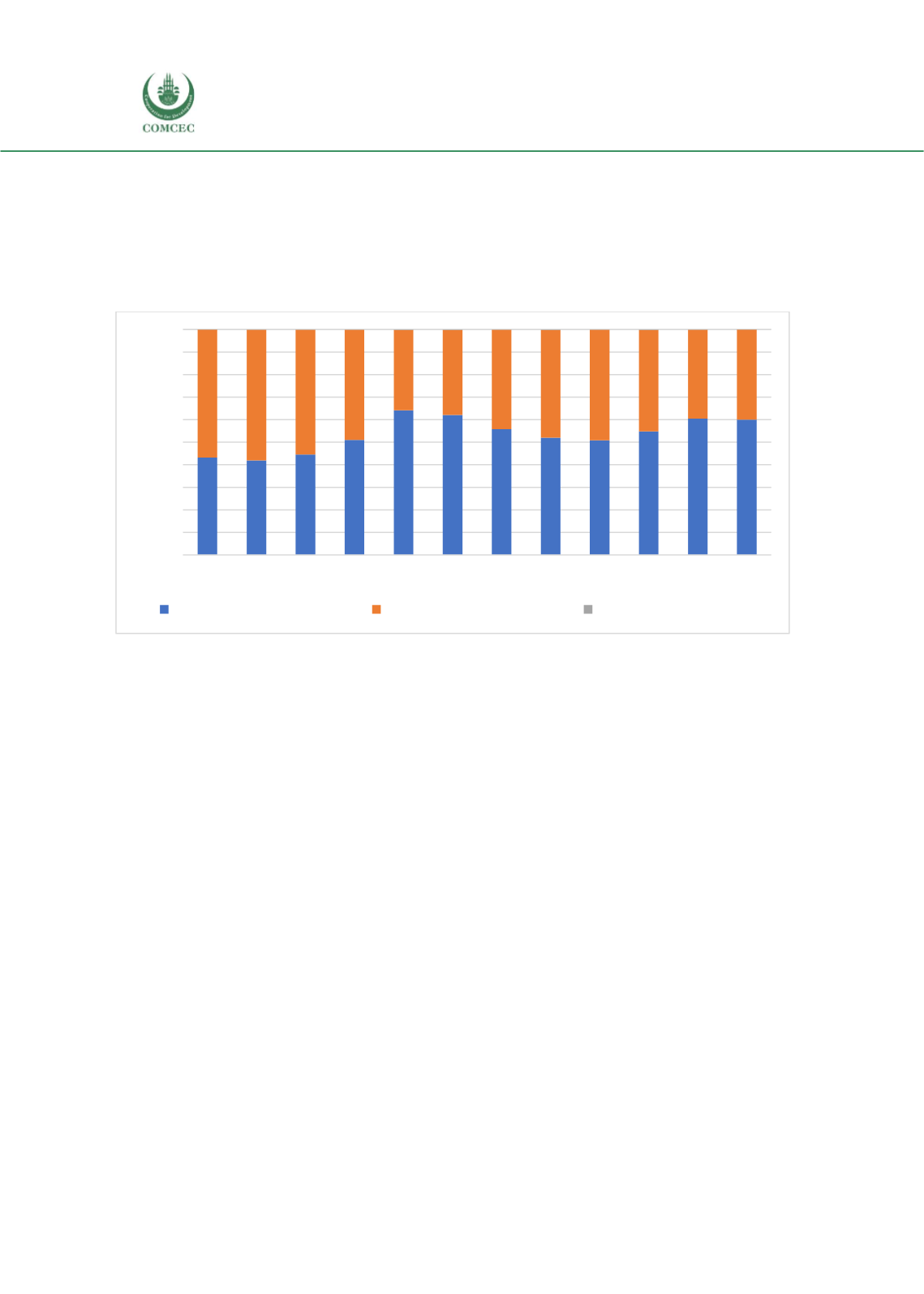

Analysis of Agri-Food Trade Structures
To Promote Agri-Food Trade Networks
In the Islamic Countries
82
very poorly represented. This can be explained by the low representation of fish in the
production and marketing of agricultural products in Cameroon. Coffee, tea, cocoa and spices
are the dominant food exports. Estimated at 19.2 million USD in 2005, these agri-food products
saw a significant increase reaching an estimated 122.4 million USD in 2016 (Figure 39) and
accounting for nearly 80% of food exports in 2016.
Figure 38: Share of Agricultural Products Group in Cameroon's Exports (Percentage of Total
Agricultural Products), Types of Goods Exported
Source: UN Comtrade.
At a disaggregated product level, Cameroon’s exports are highly concentrated. The top ten
products account for nearly 98% of total exports of agricultural products, with just two
products, cocoa and chocolate and cork and wood, accounting for 76%. This level of
concentration is not uncommon in a resource dependent economy, but can create
macroeconomic problems, as it means the agricultural economy is highly subject to
international price swings in just a few key commodities.
Figure 39 shows recent trends in Cameroon’s exports at the product level. The high degree of
product-level concentration emerges clearly from the figure. A second key finding is that export
trends are not clear in for the two key commodities: cork and wood is relatively flat over time,
and cocoa and chocolate has gone through periods of growth followed by contraction, which
suggests that it may have cyclical features.
0%
10%
20%
30%
40%
50%
60%
70%
80%
90%
100%
2005 2006 2007 2008 2009 2010 2011 2012 2013 2014 2015 2016
Share of agri-food products Share of agri-raw materials Share of fish products
















